Many museums, including the Portland Art Museum, have displays of Mission Baskets which generally refers to baskets made by Indian people on the southern coast of California: Chumash, Gabrieleno, Luiseno, Juaneno, and Digueno. The designation “Mission Baskets” was developed by anthropologist Alfred Kroeber in 1922.
From the display on Mission Baskets at the Portland Art Museum:
“The Franciscans established twenty-one missions in California, recruiting from more than twenty tribal groups between San Diego and the San Francisco Bay and inland communities. The Franciscan Mission system lasted from 1769 to 1834 on the central and south coast of California. Very few of the baskets made during that period are extant. Therefore, baskets identified as Mission in most collections are actually made by descendants of people who lived at or near the Missions—but only the descendants of the southernmost ten missions are identified by Kroeber as Mission.”
The establishment of the California missions and the enslavement of the Indians to work in this missions resulted in a massive depopulation. In his book The Way We Lived: California Indian Reminiscences, Stories and Songs, Malcolm Margolin writes:
“For the Native Californians the arrival of the Spaniards meant disruption, virtual enslavement, diseases, and death.”
For the Indians who were confined in the missions, public health factors such as poor sanitation and psychological factors such as depression undoubtedly enhanced the high death rate. Women and children had exceptionally high death rates. According to Robert Jackson and Edward Castillo, in their book Indians, Franciscans, and Spanish Colonization: The Impact of the Mission System on California Indians:
“the attempt by the missionaries to wipe out much of native culture may have denied young women access to traditional child-care knowledge.”
Mission life also meant the loss of traditional skills, such as basket weaving.
In 1834, the missions were secularized which meant that many Indian people lost their lands and their homes.
Shown below are some of the Mission Indian baskets on display in the Portland Art Museum.
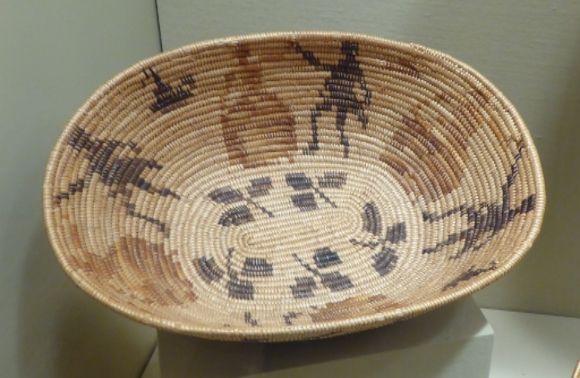 The oval basket shown above was made about 1920 by an unknown Cahuilla artist. It is made from juncus, sumac, and grass.
The oval basket shown above was made about 1920 by an unknown Cahuilla artist. It is made from juncus, sumac, and grass. 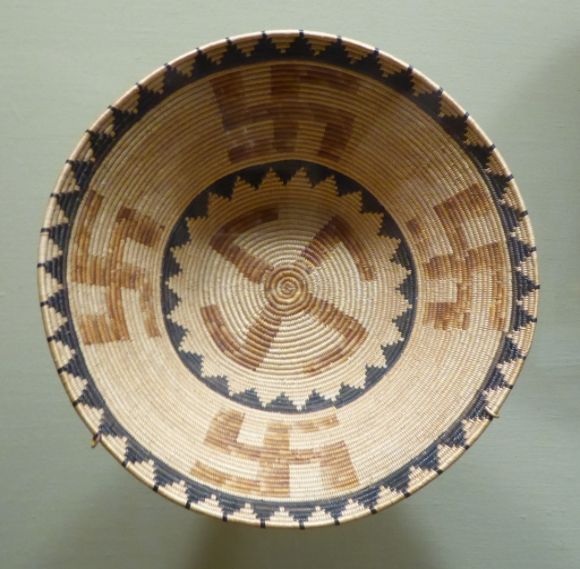 The basket shown above was made about 1920 by an unknown Luiseño artist. It is made from sumac, juncus, and grass.
The basket shown above was made about 1920 by an unknown Luiseño artist. It is made from sumac, juncus, and grass. 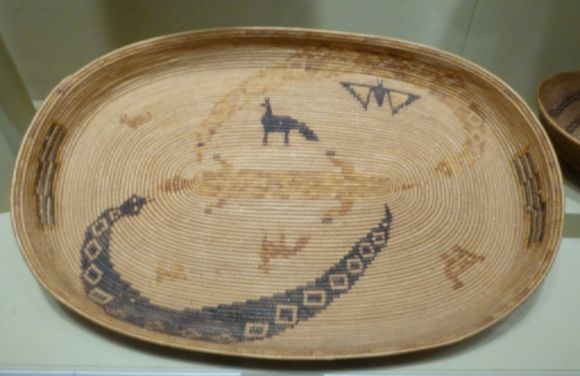 The basket tray shown above was made about 1920 by an unknown Cahuilla artist. It is made from sumac, juncus, and grass.
The basket tray shown above was made about 1920 by an unknown Cahuilla artist. It is made from sumac, juncus, and grass. 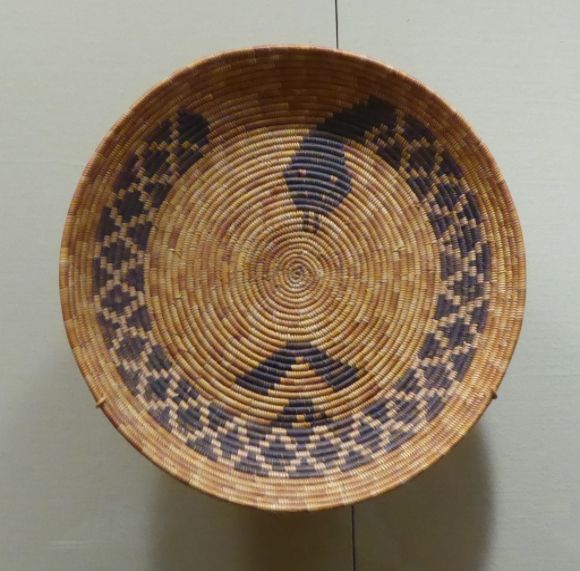 The basket shown above was made about 1920 by an unknown Cahuilla artist. It is made from sumac, and juncus.
The basket shown above was made about 1920 by an unknown Cahuilla artist. It is made from sumac, and juncus. 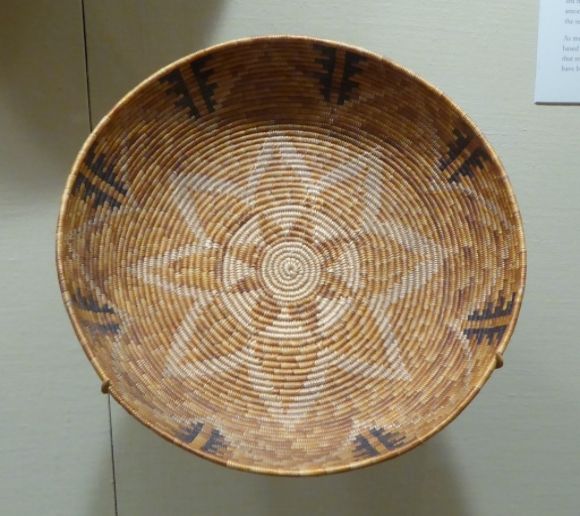 The basket shown above was made about 1920 by an unknown Mission Indian artist. It is made from sumac, juncus, and grass.
The basket shown above was made about 1920 by an unknown Mission Indian artist. It is made from sumac, juncus, and grass. 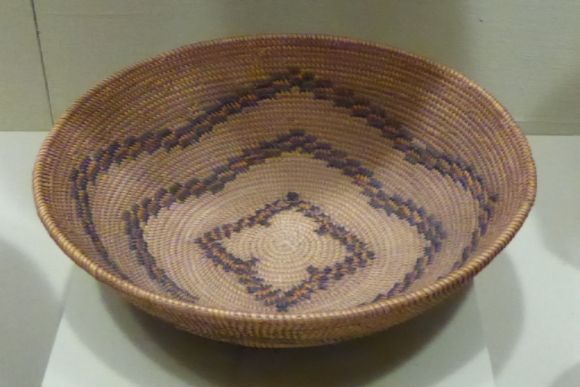 The work basket shown above was made about 1890 by an unknown Mission Indian artist. It is made from grass, juncus, and sumac.
The work basket shown above was made about 1890 by an unknown Mission Indian artist. It is made from grass, juncus, and sumac. 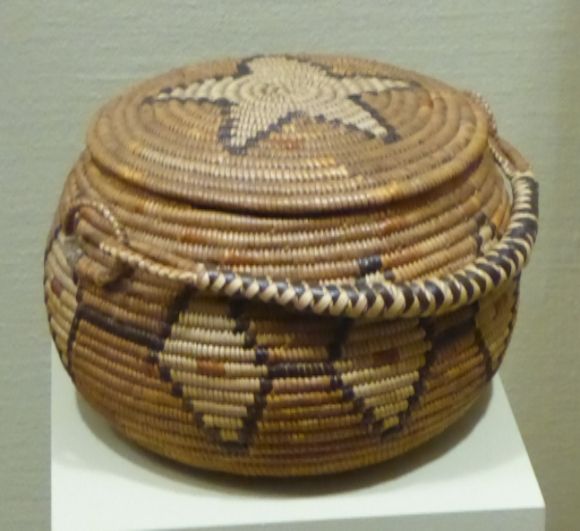 The lidded basket shown above was made about 1920 by an unknown Cahuilla artist. It is made from juncus, split palm leaf, and grass.
The lidded basket shown above was made about 1920 by an unknown Cahuilla artist. It is made from juncus, split palm leaf, and grass. 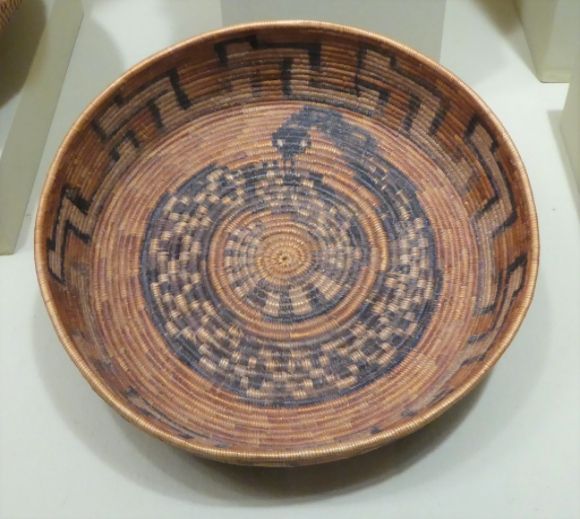 The rattlesnake basket shown above was made about 1900 by an unknown Mission Indian artist. It is made from juncus, sumac, and grass.
The rattlesnake basket shown above was made about 1900 by an unknown Mission Indian artist. It is made from juncus, sumac, and grass. 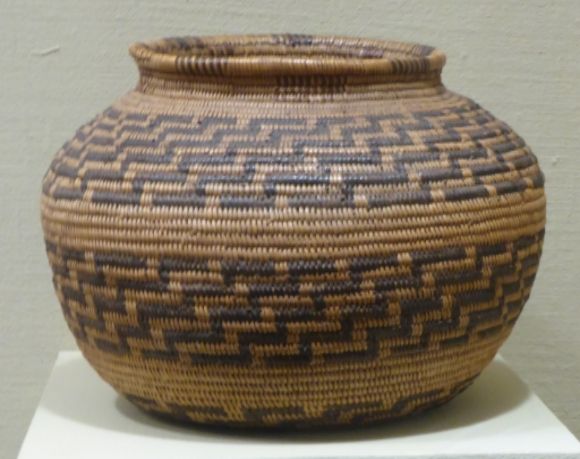 The basket shown above was made about 1850 by an unknown Kawaiisu artist. It is made from sumac, devil’s claw, and yucca root.
The basket shown above was made about 1850 by an unknown Kawaiisu artist. It is made from sumac, devil’s claw, and yucca root. 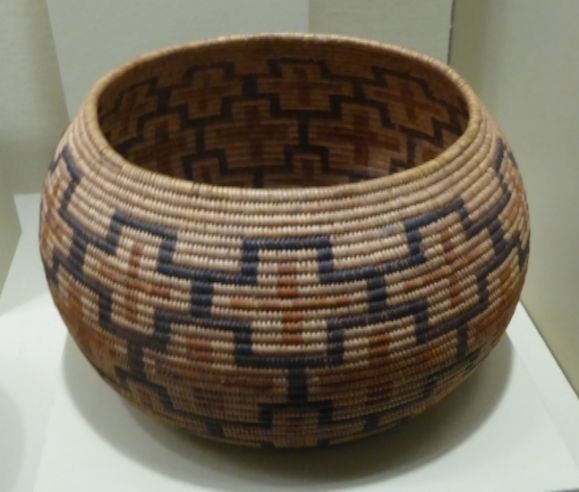 The work basket shown above was made about 1850 by an unknown Mission Indian artist. It is made from willow and juncus.
The work basket shown above was made about 1850 by an unknown Mission Indian artist. It is made from willow and juncus. 
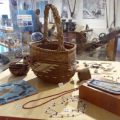
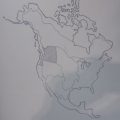
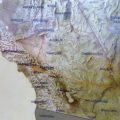
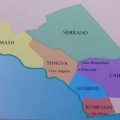
Leave a Reply